Running A Good Race
For this Missouri job shop, it’s not about what you call the machine tool, it’s about how you use it. The shop considers multi-spindle turning as simply using more than one spindle in various configurations best suited to the production requirements of the application.
Dealing with change and adapting to it is a survival skill most shops are learning whether they want to or not. Traditional machined parts markets dry up as others open up.
With much of the high-volume "easy work" gone from our shores, lot size break points have dropped for production houses to points that were once not even considered for bid. Reacting to these changes has required a reevaluation of available technology and applying it to today’s needs. In many cases, the days of finding the right job for the tool have been replaced with finding the right tool for the job.
I recently ventured to Joplin, Missouri, to visit CNC Machine Products, Inc. It has weathered transitions in its niche of turning bearing races, inner and outer, for most of the world’s bearing OEMs by rethinking what constitutes multi-spindle production turning and investing in technology that makes sense for its current market needs.
A Secret Weapon
CNC Machine Products, Inc. began in 1988 manufacturing hydraulic hose couplings in a 5,000-square-foot facility with four employees. The story begins, says company co-founder and president, Greg Scheurich, with a single customer that promised to keep us busy with hose coupling work. "That led us to bite the bullet and invest $160,000 in two CNC single-spindle lathes, which was huge for us then," recalls Greg.
The business grew from there as CNCMP and the customer became increasingly confident with each other. "Over the next 2 to 3 years, we added six more CNC single spindles," says Greg.
Thanks to an industrial distributor business his dad started and Greg inherited, CNCMP had a leg up on a typical job shop for securing work for the fledgling business. "The customer base we called on for the distributor business got us into companies that might be interested in subcontracting work to our machine shop," says Greg, "and that’s how we really got the company growing."
A Little Luck
One thing any job shop knows is that if you are growing and investing in new equipment, machine tool builder sales people will find you. That was certainly the case for CNCMP. Sometimes a little luck enters the equation.
Greg tells it this way: "As we were buying more machines, the machine tool builders were coming in and asking us to look at multi-turret, live tooling, subspindle, robot-gantry load and unload lathes to facilitate complete part processing in a single handling. For a small company like us, at $350,000 a pop, we thought they were crazy. One day, literally as we were looking at the brochure with the machine tool salesman, a call came in from a bearing company asking if we’d be interested in quoting a particular part. They faxed over the print and it was a perfect mate for the machine system we were looking at. Over the phone, we gave a quick target price based on the cycle time the salesman was giving us, and we got the job."
CNCMP took delivery on this first CNC automated multi-function machine and began making parts for the bearing industry customer. From that chance occurrence, a $1 million account was born. "So as other bearing companies heard about us, we began to get even more work and purchase more multi-function machining cells. It just exploded from there," says Greg.
A Changing Industry
In the last 2 to 3 years, CNCMP’s customer list has grown to include most of the largest bearing companies in the world. Business is excellent, and the shop now has 120 employees and is housed in a 50,000-square-foot facility using more than 50 CNC multitasking automated lathes running 24/6 production.
Greg sees his shop as a beneficiary of a couple of industry trends. Bearing makers, like many OEMs, have systematically chosen to subcontract much of the "green" turning they once did in-house. These companies have chosen to only perform proprietary operations such as heat treat, grinding and assembly. This trend has been beneficial for CNCMP.
The depletion of the old cam-driven multi-spindles and automatics has also benefited Greg’s machine shop. "Much of the old equipment is beyond rebuilding, and the skilled personnel to run them are simply not around any more," he says. "However, because the industry tolerance standards for turning "green" bearing races are still based on the old multi-spindles, in every aspect except cycle time we have an advantage with our CNC equipment. Change-over is faster, tooling is generally off the shelf, and operators for this equipment are more readily available. However, if cycle time alone is the standard, then a good running, well set multi-spindle will still make more parts per hour than any other machine tool."
Moreover, because the CNC equipment can turn to tighter tolerance and hold a better Cpk, there is less grinding stock required on the rough-turned parts, which saves the bearing company cycle time on its more expensive grinding operation. It’s like a bonus to the OEM. They don’t necessarily ask for the better tolerances, but they get them anyway.
Rationalizing Production
CNCMP’s volume niche is in the 20,000 part run range. These volumes are run over a variety of machines—some justify JIT requirements, some fulfill blanket orders, and others are run once a month, 3 times a year, even once a year based on customer forecasts.
Work is allocated across the shop’s various CNC production equipment based on several criteria. "Overall, we are looking at getting the best floor-to-floor time for the job," says Greg. "We calculate based on throughput and that includes all aspects such as setup, load/unload and tooling as well as cycle time. Cycle time alone is not sufficient for our needs."
Almost from the beginning, CNCMP has structured its production around complete machining in a single handling. The majority of its machine tools are equipped with live tooling, second spindles and automated loading using gantry robots and bar feeders. For its highest-volume work the shop uses a four-spindle chuck machine equipped with dual turrets and turn/mill capability.
Flexibility Makes Lighter Work
CNCMP runs diameters from ¾ inch to 14 inches across its stable of turning centers and cells. The majority of its volume production strategy is built around three manufacturers with each bringing something a little different to the table.
Arranging like machines in cells gives the flexibility of a single turning center with the production capacity of a multi-spindle. For example, one cell is comprised of four Mazak Multiplex machines. Each machine has twin spindles with 8-inch chucks. The machines are designed to run two identical parts or perform first and second operations on one part. "It’s really like having an eight-spindle cell," says Greg. "We have the flexibility to run a variety of combinations of jobs across it."
Another cell is comprised of two, four-axis dual-spindle Okuma turning centers. They are serviced by two programmable gantry robot loaders and a turn over station. The cell can process parts as large as 8.26-inch diameter. Each machine has dual turrets that can both be in the cut at the same time allowing cycle times of 25 seconds.
Facing this cell is a newer Okuma cell for making smaller-diameter parts. It’s configured with twin spindles located side by side and loaded by a gantry loader. The machine uses a sliding headstock variation for rapid production of smaller parts.
For the higher-volume part runs, a four-spindle Kitako multi-spindle machine is used. Turning capacity for this machine is 5.9 inches in diameter. It is a three-axis dual-turret machine fed by a robot loader and uses a turn over station. Each turret is capable of milling and turning, eliminating the need for secondary operations. When I visited the shop, it was running a large lot of forgings.
These cells make up the majority volume production capability. The balance of production is spread across numerous other turning machines from single-spindle to B-axis multitasking. There’s a lot of turning capacity in this shop, which gives CNCMP the ability to assign jobs to the machines best suited to perform them.
Greg breaks down part volume allocations like this: Jobs from 5 to 800 pieces go to the single-spindle or stand-alone turning centers; volumes of 800 to 20,000 are assigned to the turning cells; and part runs of more than 20,000 go to the multi-spindle. He also allocates work among the cells based on load/unload times and ease of change-over.
"Generally, our production cells all run similar cycle times in the cut," he says. "Differences come from load/unload times and ease of change-over. For example the Okuma cells, which use two gantry loaders, exchange parts in about 8 seconds. The Multiplex cell takes about 12 seconds. On the other hand, change-over on the Mazak is faster and easier. The Kitako is the most difficult to change-over. However, because of its four-spindle design, load/unload time is free. That’s why we use it for the longest runs. This machine’s twin turrets work on the two lower spindles while the gantry loader exchanges parts on the top two spindles. Two parts are machined while two parts are exchanged—zero load/unload time."
One Busy Department
Keeping the 50-plus machines fed with blanks requires a production department of a different ilk. At CNCMP, production sawing is where the machining process begins. The shop uses 52100 bearing steel tube across the board. Its band saws are augmented by two production cutoff machines that, depending on the width of the bearing race, can cut as many as four blanks at once.
The company keeps an inventory of more than $2 million of tube stock on hand to help it be responsive to quick delivery requests. "In a niche like ours, we have to be able to respond better and faster than competition," says Greg. "Often, it’s less a question of price and more about delivery. That philosophy of throughput drives the business."
A Nice Niche
CNCMP has carved out a nice business niche. Its mix of turning options from hand-loaded two-axis turning centers to fully automated multi-spindle machines allows tremendous flexibility for scheduling work through the job shop.
The shop has a machine tool replacement program with a 4- to 5-year cycle. In part, the program’s purpose is to replace worn equipment, but it is also implemented to take advantage of the most up-to-date technology.
Turning bearing races allows, with a few exceptions for specials, use of standard tooling that can usually carry over from job to job. Greg’s industrial distributorship gives his shop an advantage of acting as a "beta-site" for cutting tool companies it carries. "We represent Sandvik, Valenite, Seco and Kennametal tooling lines and do tests here for them," Greg says. "It allows us to continuously improve our process technology."
As an intermediary production step for its OEM customers, the ability to make parts that are better than industry standards and save the OEM production costs in its proprietary operation makes a compelling case to continue using CNCMP. All in all, this shop is a nice example of successful manufacturing.
Read Next
A Tooling Workshop Worth a Visit
Marubeni Citizen-Cincom’s tooling and accessory workshop offers a chance to learn more about ancillary devices that can boost machining efficiency and capability.
Read MoreEmerging Leaders Nominations Now Open
Here’s your chance to highlight a young person in your manufacturing business who is on the path to be a future leader moving your company forward.
Read MoreDo You Have Single Points of Failure?
Plans need to be in place before a catastrophic event occurs.
Read More





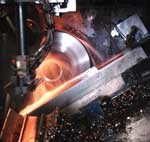

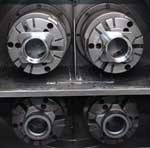
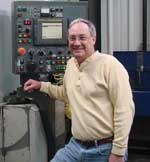
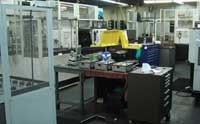
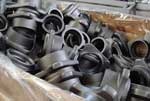
















.jpg;maxWidth=970;quality=90)